
A Professional's Guide to Japandi Interior Design
In interior design, the fusion of different styles often leads to the creation of unique and captivating aesthetics. One such design trend that has gained immense popularity in recent years is the Japandi interior design.
Combining the best of Japanese minimalism and Scandinavian simplicity, Japandi offers a harmonious blend of elegance, functionality, and natural warmth.
In this guide, our in-house interior stylist, Adrika, will explore the principles, key elements, and essential tips for creating a stunning Japandi-inspired home. Whether you’re looking to create a Japandi living room or bedroom, this guide will be your go-to resource.
For Adrika, no two homes are ever the same. With clients’ narratives always at the forefront, it’s her passion to help bring spaces to life! With a wealth of design knowledge built up over the last 8 years in the Interior Design industry, Adrika has styled thousands of homes - between Australia and Singapore!
What is Japandi interior design?
“Although worlds away from each other, the Scandinavian and Japanese designs encompass very similar belief systems,” says Adrika. While Japanese design emphasises simplicity, minimalism, and Zen aesthetics, Scandinavian design focuses on clean lines, natural materials, and cosy elements.
“Japandi takes these principles and combines them to create a balanced, serene living space that is soothing and ordered.”
While the Japandi style may be gaining ever-increasing popularity, the origins of Japandi date back to the 19th century, when Danish designers started travelling to Japan after over 200 years of border closures.
Danish designers were inspired by the ceramics, architecture, and craftsmanship of this oriental aesthetic and it began to bleed into their own design philosophies.
Key characteristics of Japandi interior design
Aside from being uncluttered and functional, here are some other characteristics of the Japandi interior style:
Natural materials: Japandi interiors often use wood, bamboo, stone, and paper to bring warmth and a touch of nature to the space
Neutral colour palette: Japandi interiors typically feature a neutral colour palette, with a dominant use of earthy tones such as whites, greys, browns, and muted pastels
Intentional decor pieces: You’ll find that Japandi interiors usually have handmade ceramics and weathered finishes as decor
Natural light: Japandi interiors usually place emphasis on natural lighting
Japandi interior design styling tips
Opt for functional furniture
Japandi design emphasises the fusion of beauty and functionality. “Always consider what part each piece of furniture is playing in the space. Every item in a Japandi space should have a purpose beyond just being aesthetically pleasing,” Adrika shares.
That said, look for furniture that serves more than one purpose. For example, a sofa bed can be used for seating during the day and easily converted into a comfortable sleeping space at night. Coffee tables with built-in storage compartments or nesting tables that can be easily tucked away when not in use are also great functional options.
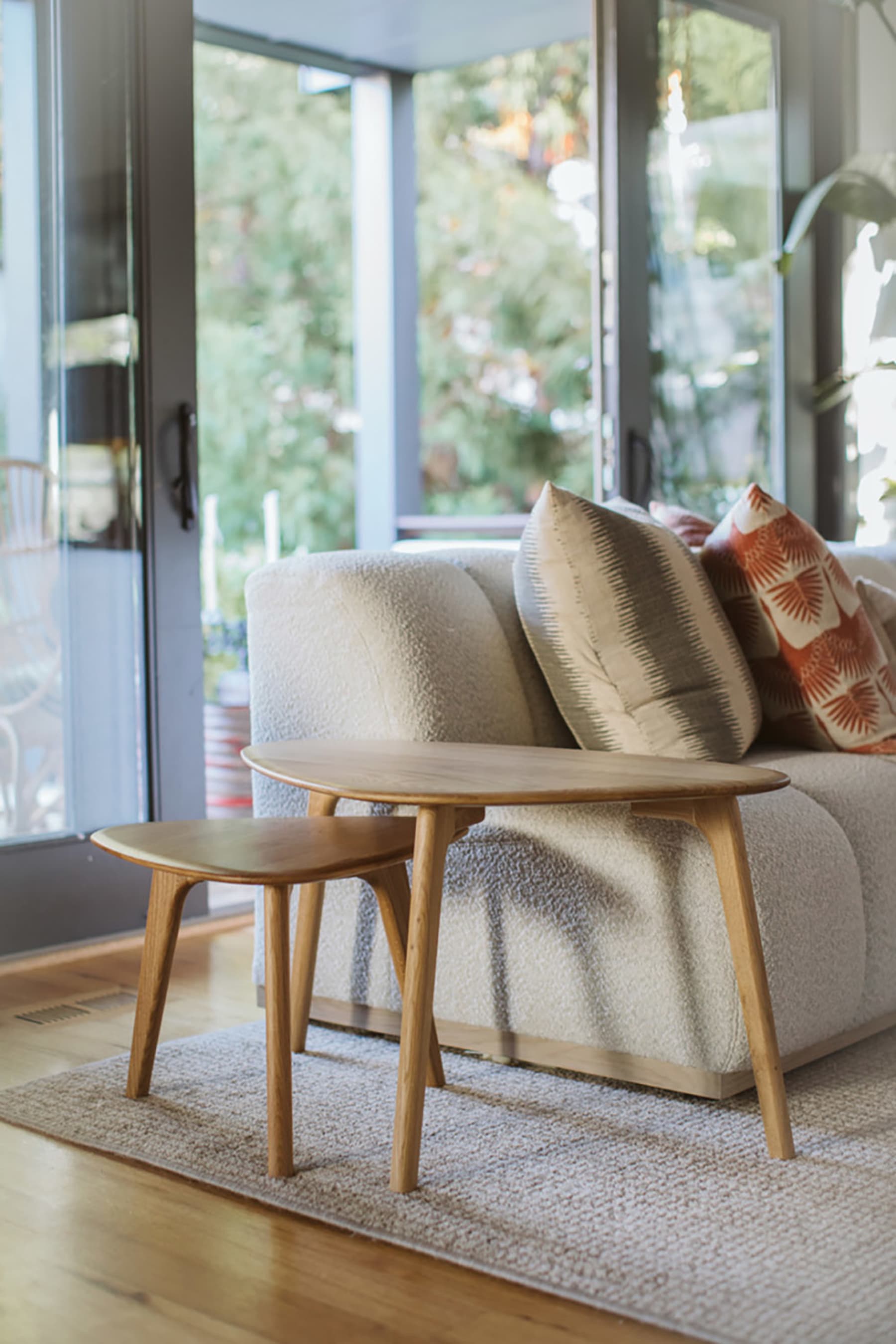
The Vincent Coffee Table Set in Oak is great for small spaces. Picture credits: @bbbuffaloe
Also, choose furniture pieces that offer ample storage options, such as dressers or sideboards with drawers and shelves. These pieces not only provide a designated place to store items but also help keep things clutter-free and clean.
To help you visualise and imagine how a Japandi design might look, we used Castlery’s room designer tool along with the Owen Sofa with Natural Leg, Vincent Dining Table Set in Oak, Ingrid Sherpa Chair, and Desi Wool Area Rug.
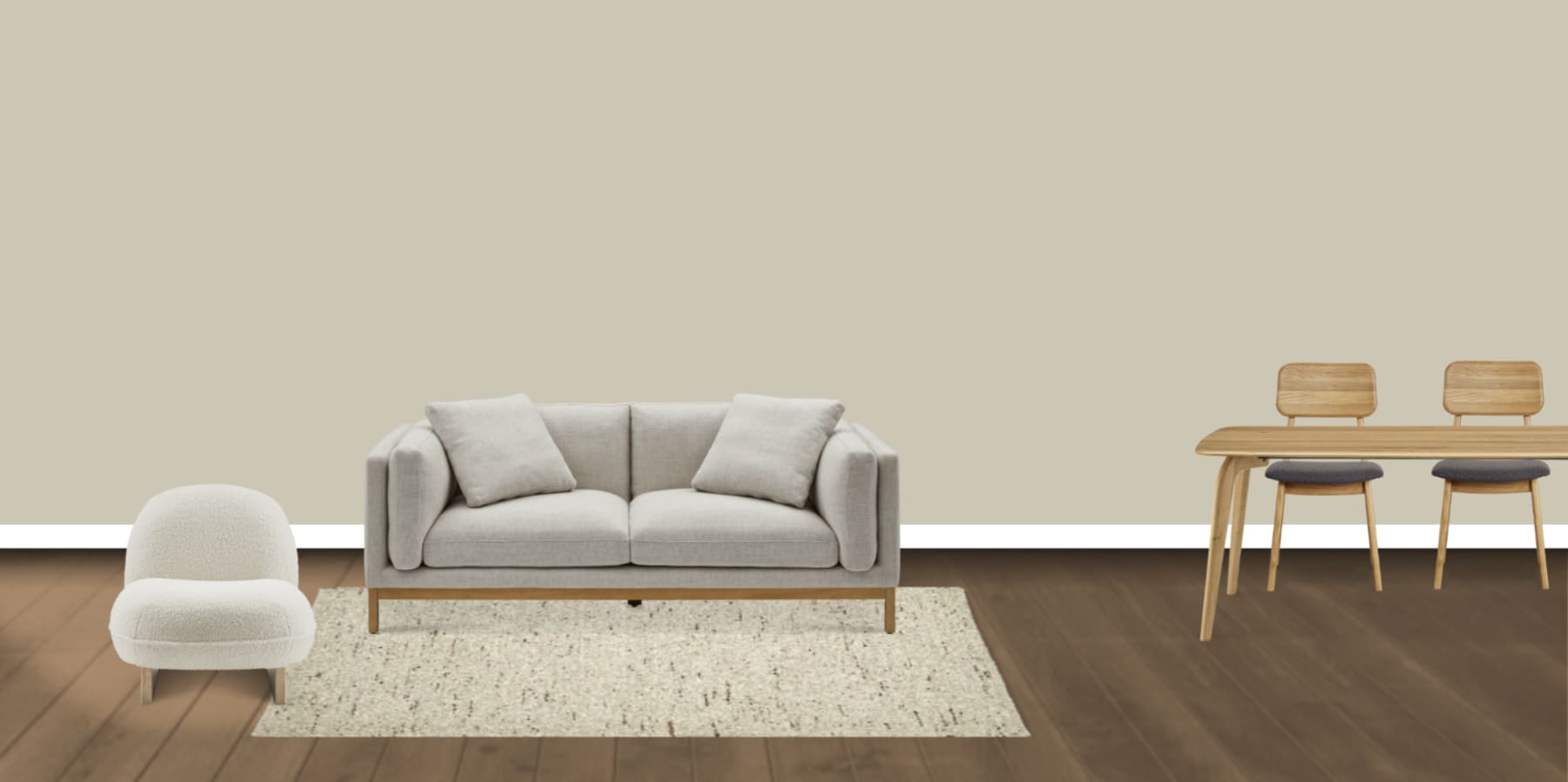
Using our room designer tool, you can visualise how different furniture pieces look in the Japandi style.
Incorporate woods
“Woods are a must in the Japandi design style!” Adrika shares. Using wood is an integral part of Japandi design as it brings warmth, natural beauty, and a sense of connection to the space.
Opt for wooden flooring with a light or medium-toned finish. The natural grain and warmth of the wood create a solid foundation for the Japandi aesthetic.
Also, choose furniture pieces made from wood or featuring wooden accents. Light or medium-toned woods like oak, birch, or maple work well in Japandi interiors. Consider a wooden dining table, sideboard, or coffee table to anchor the space.
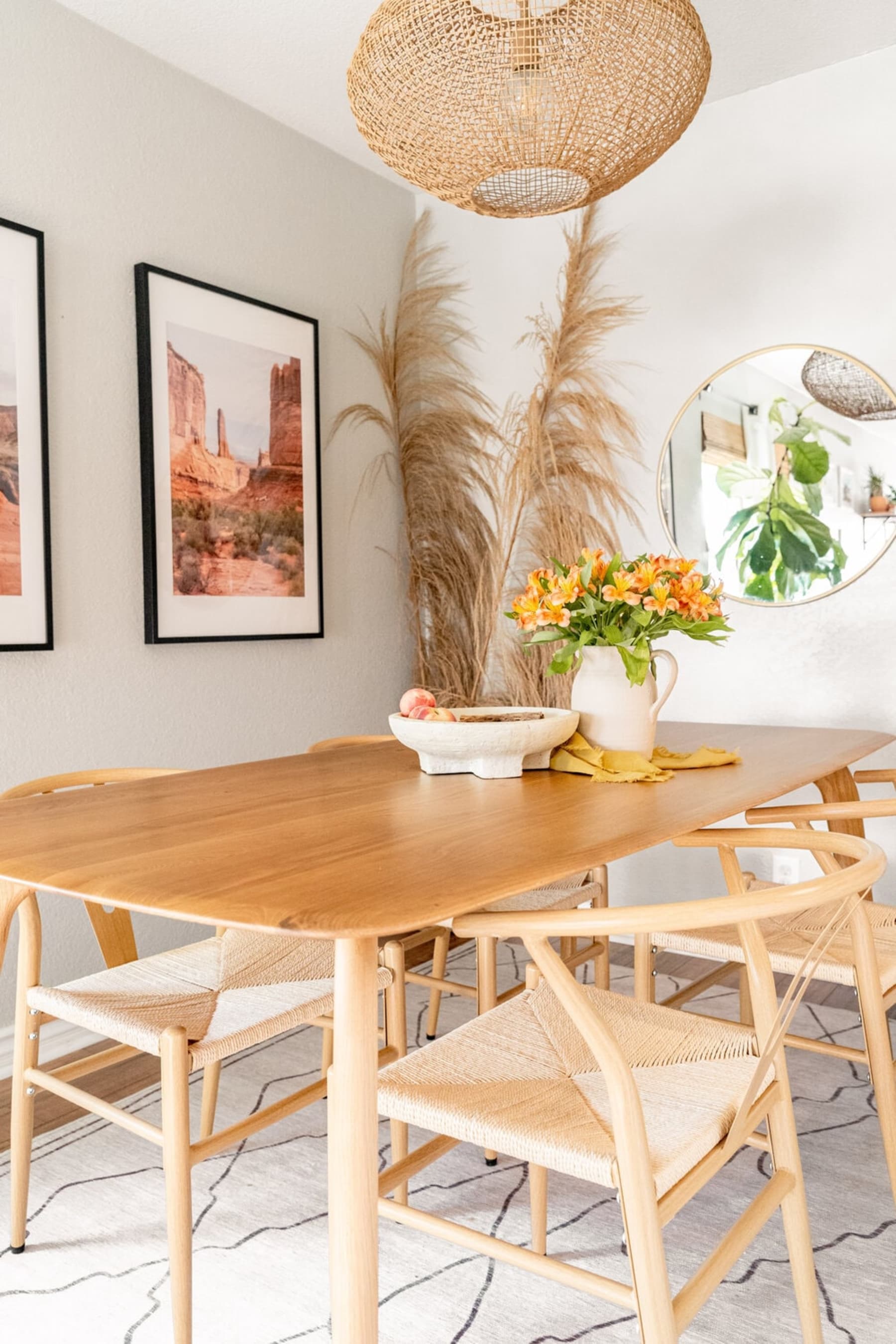
The Vincent Dining Table in Oak is perfect for the Japandi theme. Picture credits: @thenativespirit
“It’s also totally okay to mix and match different tones and wood types.” For example, combining light, medium, and dark wood finishes can create a harmonious and balanced look. Just ensure that the overall effect remains cohesive and does not overwhelm the space.
Stick to a neutral palette
As mentioned earlier, Japandi interior design styles favour neutral palettes as they’re aligned with being Zen and simple. Opt for a neutral colour scheme that includes soft earthy tones such as whites, greys, beiges, and browns. These colours create a serene and harmonious atmosphere.
“While the colour palette is neutral, think about using different textural elements to create interest and depth in a room. Bouclés, linens, and cotton elements all work well in a Japandi home,” Adrika adds.
She also mentions that you shouldn’t be afraid of adding subtle pops of colour - but sparingly - through accent pieces or artwork. “Muted greens and maroons are the perfect colour combinations to maintain a feeling of calmness and highlight the space.”
Embrace minimalism
Japandi design is rooted in minimalism. It involves creating a space that is uncluttered, free from excess, and focused on essential elements.
Other than decluttering your space, choose furniture and decor with clean lines and simple forms. Consider pieces with sleek silhouettes and geometric shapes over ornate or fussy designs. Opt for minimalist aesthetics, focusing on functionality and elegance.
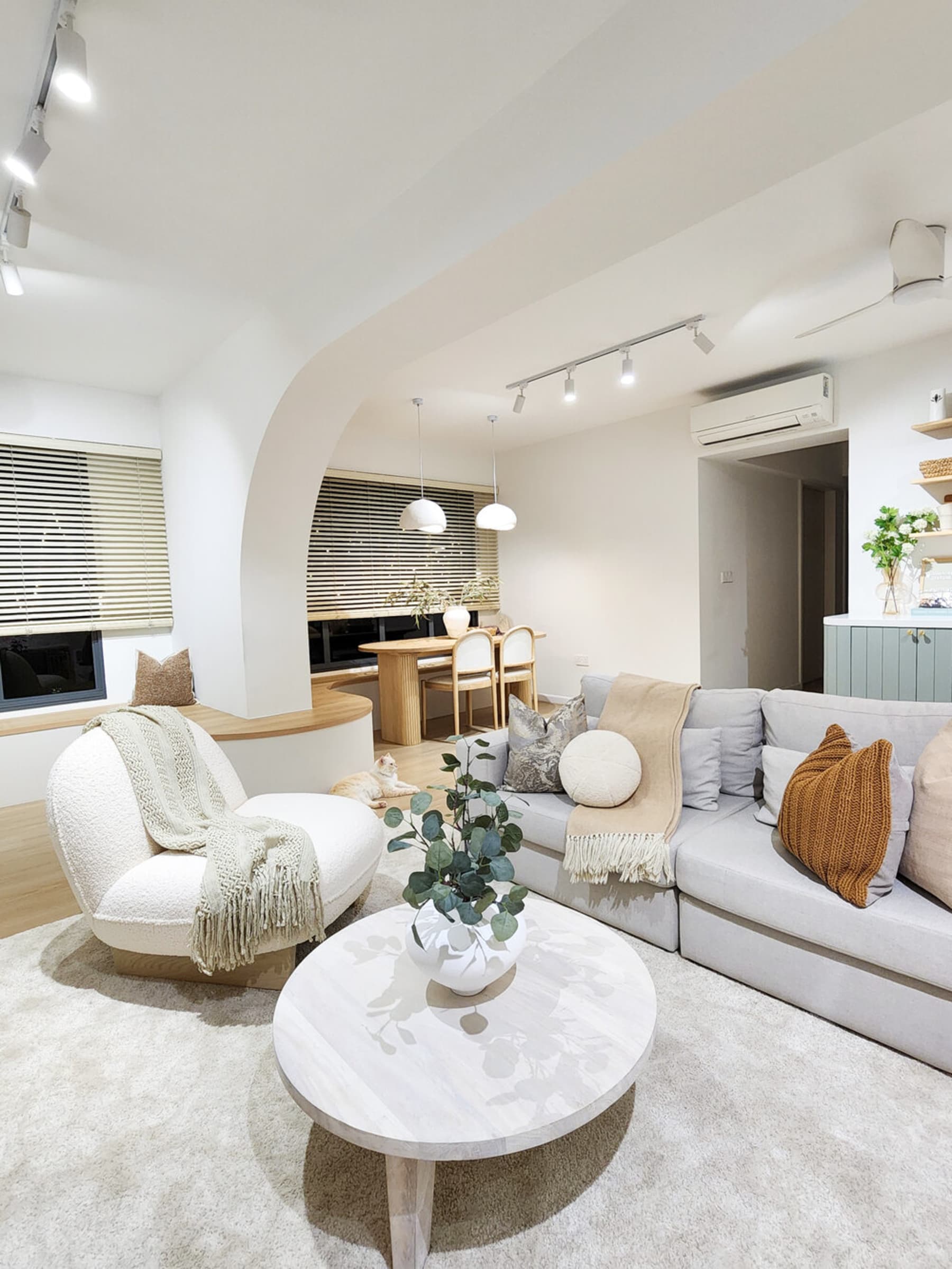
@ohhmyy.home maintains a clean and uncluttered aesthetic. Pictured: The Ingrid Sherpa Chair.
Additionally, practice the concept of negative space, which is the empty or unoccupied areas in a room. Allow for breathing room between furniture and objects, creating a sense of openness and balance. Negative space contributes to the overall visual appeal of Japandi and highlights the importance of each individual element.
Add Wabi-Sabi accents
Wabi-Sabi is a key element that ties the Japandi look together. This Japanese concept celebrates imperfection and the beauty of natural aging.
Embrace the charm of handcrafted and artisanal items in your Japandi design. Look for ceramics, pottery, or textiles made by skilled artisans. Handmade objects often exhibit unique irregularities, textures, and subtle imperfections that celebrate the human touch.
Also, incorporate tactile textures that emphasise this aesthetic, like handmade paper or woven textiles. These materials bring a sense of rustic charm and uniqueness to the space.
Incorporate greenery
Bring nature indoors by incorporating indoor plants. Plants not only add a touch of greenery but also contribute to a sense of calm and tranquility. Choose low-maintenance plants such as succulents, bonsai trees, and terrariums to align with the simplicity of Japandi design.
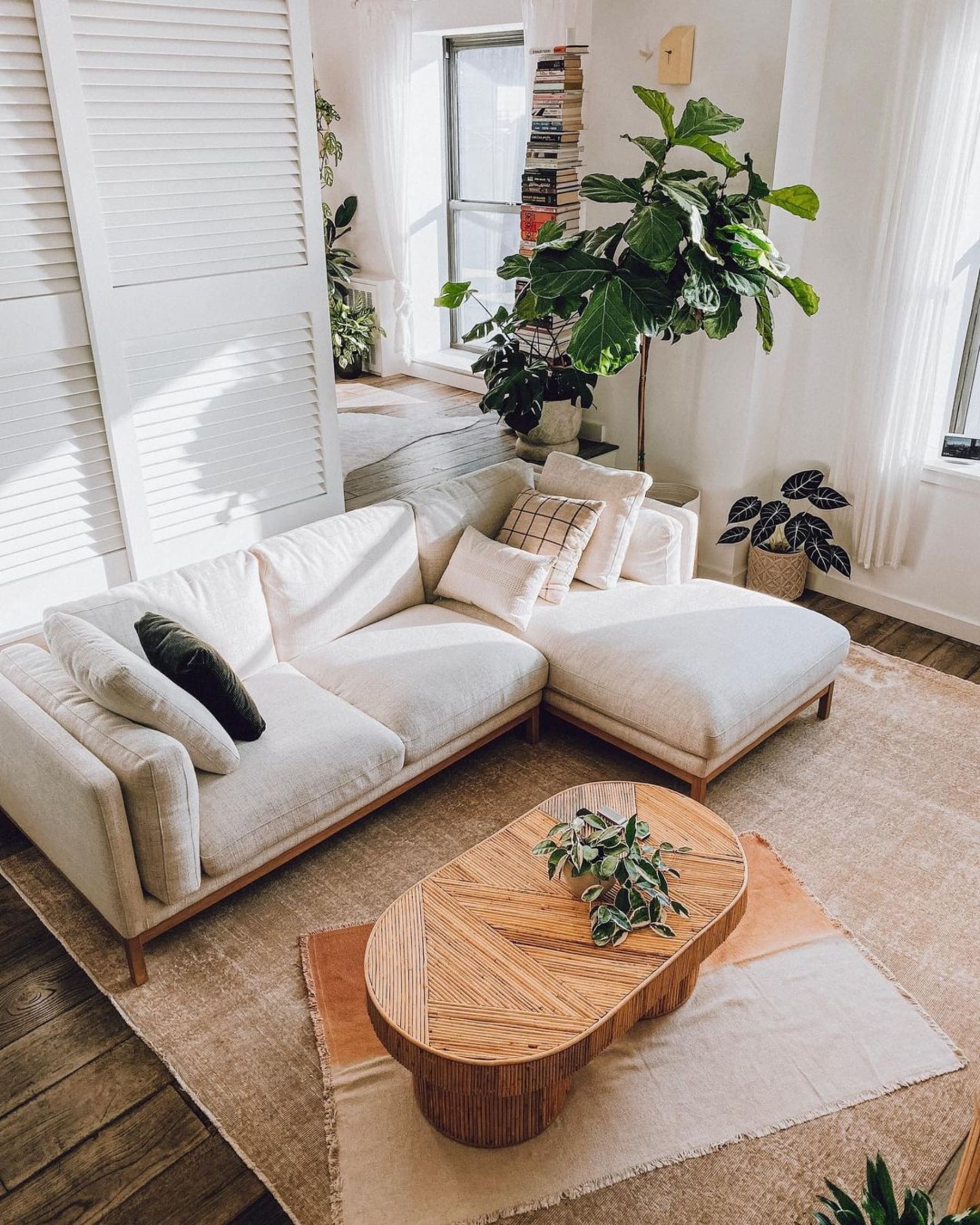
@heydavina decorates their living space with greenery and other natural materials. Pictured: The Owen Chaise Sectional Sofa.
Japandi interior design offers a compelling fusion of Japanese and Scandinavian styles, resulting in a space that is both visually appealing and highly functional. By embracing minimalism, natural materials, and a harmonious balance, you can create a serene and inviting home inspired by the principles of Japandi design.
If you need more help visualizing how the Japandi interior can work for you, check out Castlery’s room designer tool! This tool allows you to bring your imagination to life by placing different furniture pieces and customizing colors to suit the Japandi interior design. Try it out today!